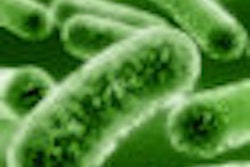Computed tomography (CT) texture analysis of primary tumors may be a potential imaging biomarker in localized esophageal cancer following neoadjuvant chemotherapy, according to research presented February 9 at the 2013 Cancer Imaging and Radiation Therapy Symposium in Orlando, FL.
The study evaluated the tumoral texture analysis on baseline and post-treatment CT scans of 31 patients with localized resectable esophageal cancer patients with a median age of 63 and who received neoadjuvant chemotherapy between 2007 and 2010, according to a press release.
CT scans were performed before and after the use of chemotherapy and prior to surgery. All patients received platinum and fluorouracil-based chemotherapy followed by surgery. Texture parameters (mean grey level intensity [MGI]), entropy, uniformity, kurtosis, skewness, and standard deviation of histogram were derived for four filter values to highlight structures of different spatial width: 1.0 (fine texture), 1.5-2.0 (medium), and 2.5 (coarse). Median follow-up was 21.9 months.
Primary tumors became more homogenous following chemotherapy, as entropy decreased and uniformity increased, the researchers reported. Smaller change in skewness following chemotherapy was a significant prognostic factor -- median overall survival was 36.1 months versus 11.1 months. Lower baseline entropy and lower post-treatment MGI also were associated with improved survival, although they demonstrated only a trend toward significance.
Texture analysis of the CT scans is a post-processing step, which was done utilizing proprietary software (TexRAD) which enhances the images in ultrafine detail not visible to the human eye. Certain tumoral features changed consistently following chemotherapy, and some features were associated with overall survival, the research team concluded.



















